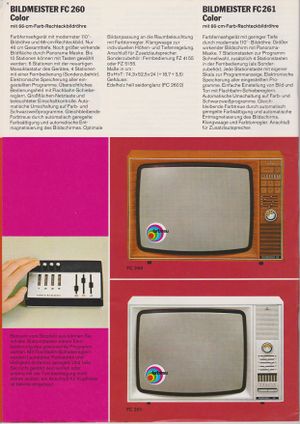Translations:Fernbedienungen/6/en
Zur Navigation springen
Zur Suche springen
The 1980s saw a shift toward infrared technology. With its SFH506-xx series of electronic components, which were offered for frequencies of 30, 33, 36, 38, 40 or 56 kHz, Siemens became the largest provider of infrared devices on the European market.[1] New receivers like cassette recorders were developed, hand in hand with new features, such as teletext.
PKS (now Sat.1) and RTL were the first private broadcasters to go live in January 1984. The subsequent surge in the number of television programs increased the demand for program selection options. Remote controls became more complex and were to control more and more entertainment and communication electronic devices.
- ↑ Walter Fischer: Digitale Fernseh- und Hörfunktechnik in Theorie und Praxis. MPEG-Basisbandcodierung, DVB-, DAB-, ATSC-, ISDB-T-Übertragungstechnik, Messtechnik. 2009.
